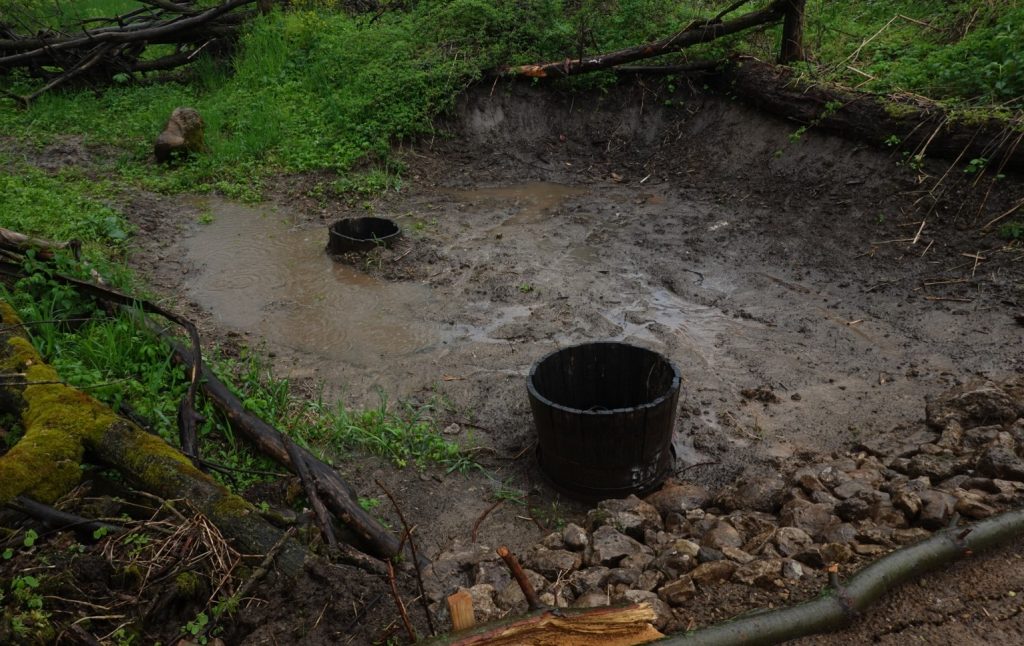Spring rain finally came. Almost four inches of it in a day.
Let me show you why erosion control is import here.
The gravel driveway didn’t erode anywhere, despite the enormous amount of rain. You know what that is? That is the sweet taste of victory. Pond, upper rain garden, and the catch basins are doing their work. Even the hops planters act as large check dams holding the water back.

Despite all that, that still leaves us with an immense amount of water pooling.

The rain garden and the pipe both pictured above are just slightly above my new check dam holding back yet another pool of water.

Despite all the rain gardens and such doing their job to catch and slow the water, there is still far more than they can hold which comes running down over the small dam and into the trough into the ravine. This trough is decades old, well predating our ownership of the farm.

Over the years this trough has dropped quite a lot of mud in the floor of the ravine. Yet it beats the alternative, which is the power of all that water eroding the ravine like a gaping maw towards our house.

Now you might expect four inches of rain to be enough to get the stream in the ravine flowing. And you are right, it does a little. But all of that is caught in a few massive sinkholes. The stream itself only runs properly if the ground is still frozen when there is significant snow melt.

The result is that the pitiful stream has been captured completely before it can reach my new dam. Only a token puddle of local runoff exists. Partly this is due, I believe, to our neighbor up the stream also having built a (much bigger) embankment. This storm was about as big as they get, only spring snow melt is significantly bigger. It appears that the two biggest challenges – the deepening of the ravine, and the widening of the ravine towards the house, have been largely contained. Widening of the ravine in other directions might still be an issue, but not so much one for us.
